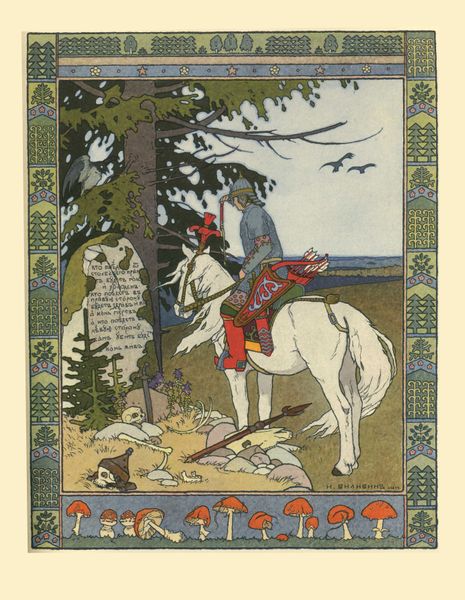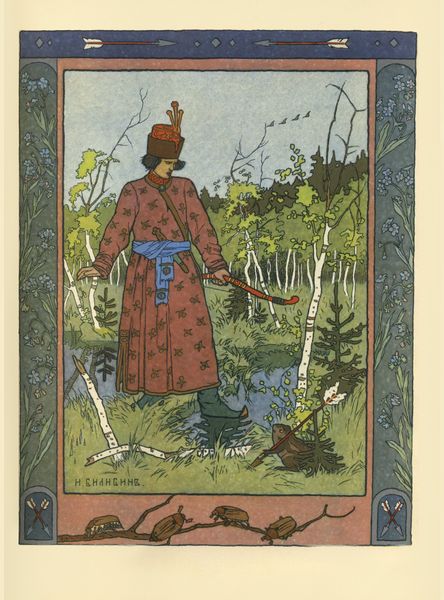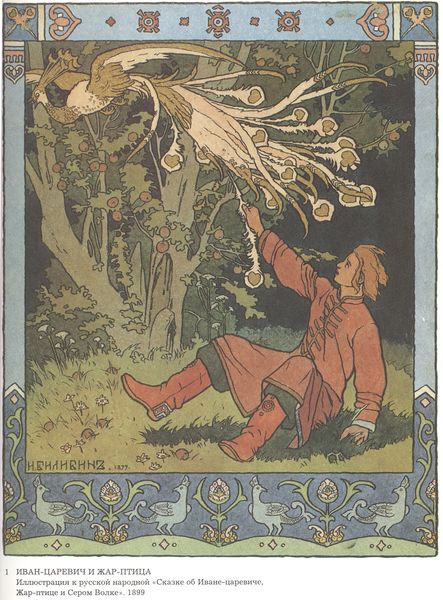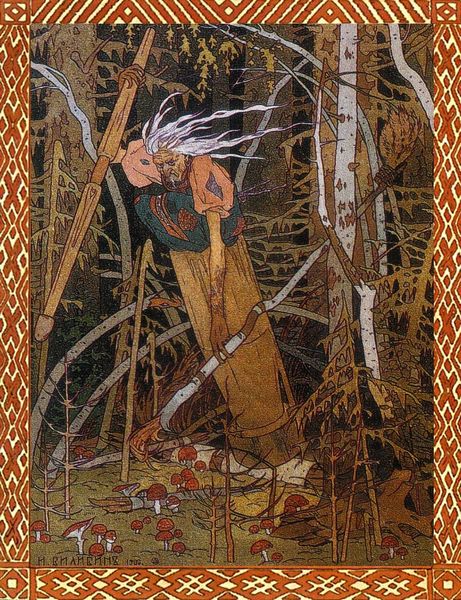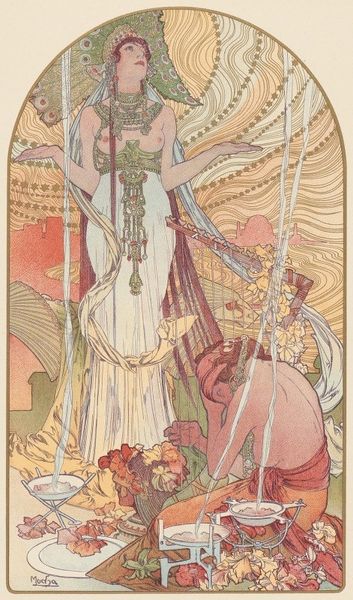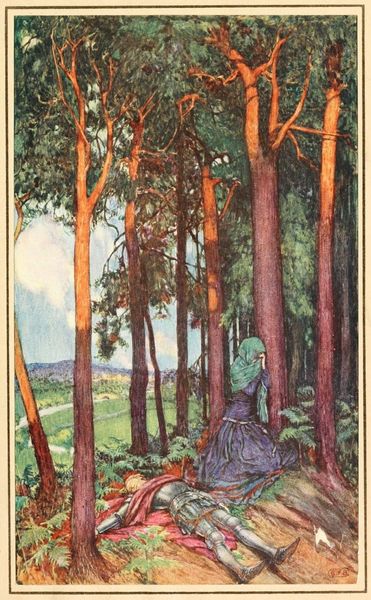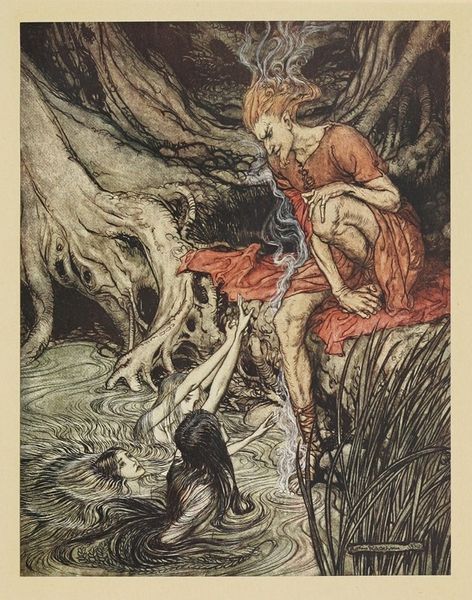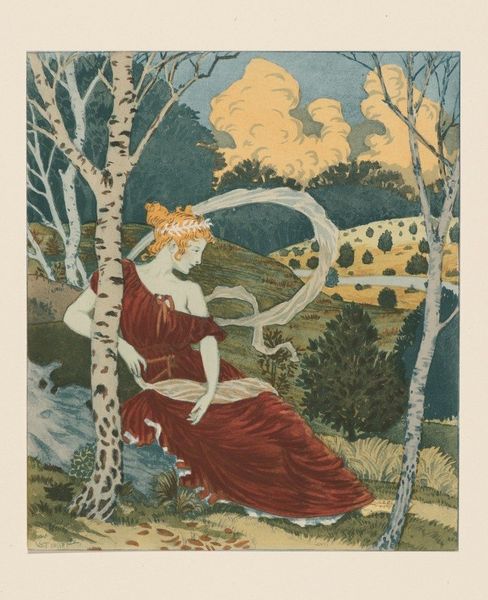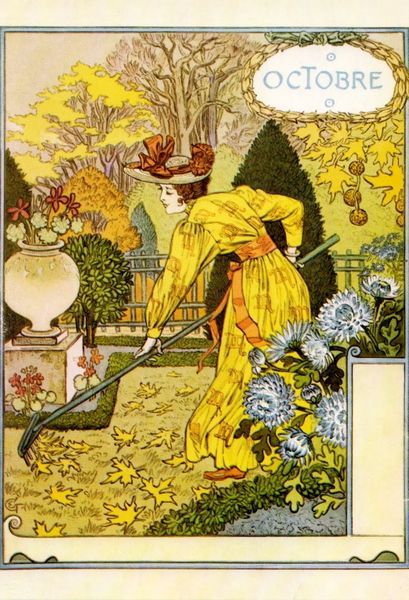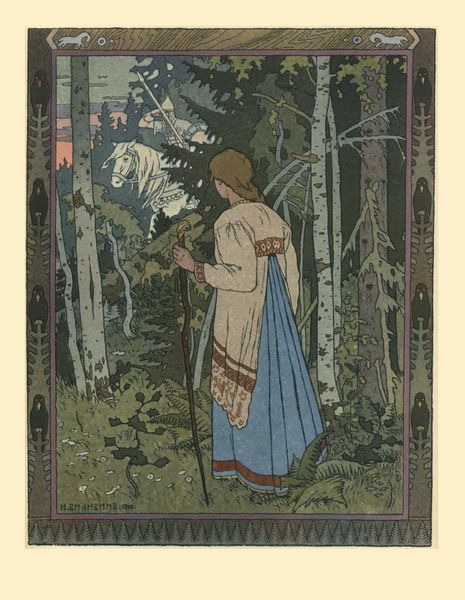
#
night
#
tree
#
naturalistic pattern
#
comic strip
#
war
#
leaf
#
junji ito style
#
pattern background
#
illustrative and welcoming imagery
#
mythology
#
cartoon theme
#
pattern in nature
#
coloring book page
#
doodle art
#
intricate and detailed
Copyright: Public domain
Editor: This is Ivan Bilibin's "Red Rider," an illustration from 1899 for the fairy tale "Vasilisa the Beautiful." The colors and fine detail give it a very stylized, almost graphic feel, like something out of a high-end storybook. The bordering ornamentation is very eye-catching. What's your take? Curator: It is a highly decorative work, certainly. Notice how the artist emphasizes line and flattened space, creating a dynamic tension between the two-dimensional surface and the illusion of depth? The limited palette, predominantly warm hues, reinforces the symbolic function; how does this emphasis effect your reading? Editor: Well, the consistent use of warm tones, especially that vivid red-orange, definitely gives it a sense of heat, of something intense happening, like a chase scene. Is it meant to highlight the fantastical aspects of the fairy tale? Curator: Perhaps. Focus instead on how Bilibin meticulously orchestrates each compositional element, from the regimented border pattern to the flowing shapes that define the flora and fauna within the central image. This all contributes to a self-referential artistic whole, and how those aspects create the narrative. Can you pinpoint any instances of symmetry or asymmetry, and consider how those choices manipulate the eye? Editor: Okay, I see what you mean. The border has these repeating symmetrical patterns of leaves and clovers, while within the picture frame, it’s very asymmetrical, and there's not a strong sense of perspective at all, which keeps it from looking too realistic, emphasizing the symbolic rather than the representational. Curator: Precisely. By considering the intrinsic formal relationships and the manipulation of line and color, Bilibin invites viewers to perceive the visual architecture, where representation merely supports a grander artistic enterprise. The meaning evolves from its execution of these choices. Editor: That really reframes how I was initially looking at it. I was so focused on the fairytale aspect that I didn't consider the artistic choices and how the medium itself plays a big part in expressing that, not just illustrating a narrative. Curator: Exactly. By isolating the components, one may analyze each form independently as part of a combined aesthetic experience.
Comments
No comments
Be the first to comment and join the conversation on the ultimate creative platform.
